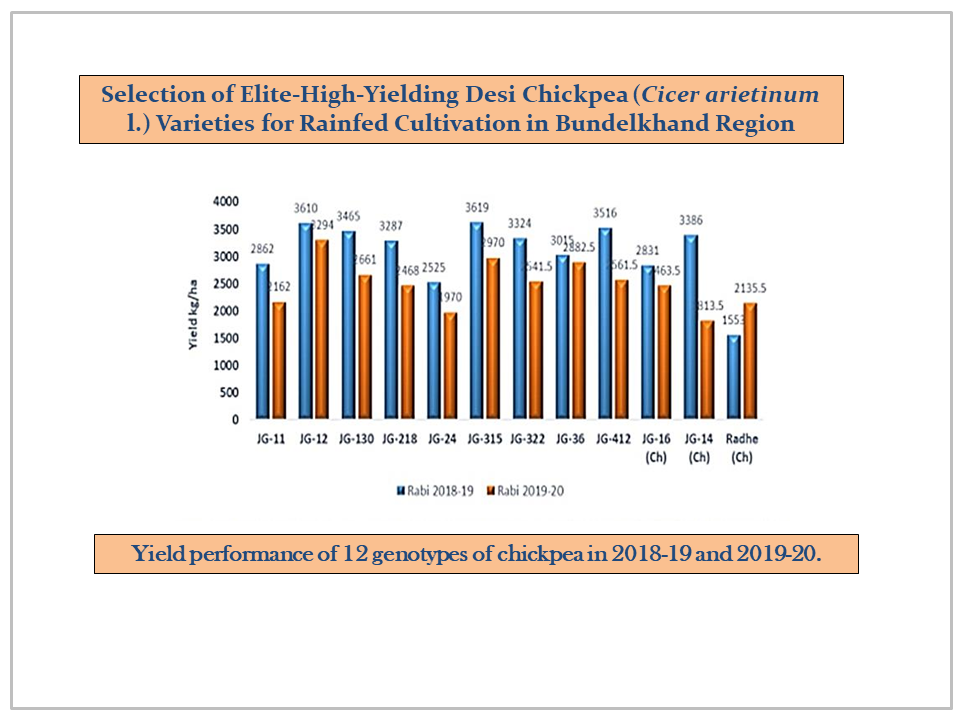Title
Selection of Elite-High-Yielding Desi Chickpea (Cicer arietinum l.) Varieties for Rainfed Cultivation in Bundelkhand Region
Authors
Hitesh Kumar,a Amit Kumar,a Vikas Guptab and Smita Singh*c
aBanda University of Agriculture and Technology, Banda 210001, India.
bICAR-Indian Institute of Wheat and Barley Research, Karnal 132001, India.
cShri Lal Bahadur Shastri Degree College, Gonda 271003, India.
*Corresponding author E-mail address: cimap.smita@gmail.com (Smita Singh)
Article History
Publication details: Received: 20th September 2022; Revised: 05th October 2022; Accepted: 05th October 2022; Published: 14th October 2022
Cite this article
Kumar H.; Kumar A.; Gupta V.; Singh S. Selection of Elite-High-Yielding Desi Chickpea (Cicer arietinum l.) Varieties for Rainfed Cultivation in Bundelkhand Region. Green Rep., 2022, 3(9), 23-27.

Abstract
Bundelkhand region of state Uttar Pradesh is a major chickpea growing region experience terminal heat and drought-stressed under rainfed cultivation. Objective of this experiment was to evaluate yield-potential and adaptability of desi-chickpea varieties for productivity and related traits under Bundelkhand climatic conditions. Result indicates significant variation among varieties for days to 50% flowering, days to maturity, plant height, pod plant-1, seed index and seed yield however, non-significant variation observed for primary branches. JG-12 cultivar was performed superior with highest yield (3451.75 kgha-1) followed by JG-315 (3294.5 kgha-1), attributed with components traits. Flowering and maturity duration were found negatively correlated with seed yield was limited crop yield potential. PCA analysis show primary branches, number of pods plant-1 and total grain yield is more informative to evaluate the varieties. JG-12 cultivar high-yielding adapted to Bundelkhand may be promoted for commercial cultivation and further used in chickpea-breeding for development of new breeding material suitable for Bundelkhand.
Keywords
Chickpea; Yield Potential; Adaptability; Correlation Coefficient; Principal Components